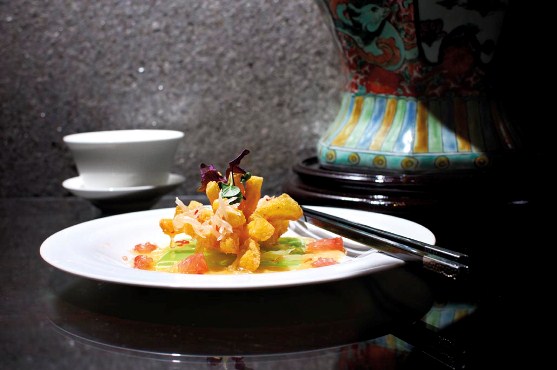Precious pulp
Chef Lim Chong Kai shows how the pomelo—often used in desserts—can play a bigger culinary role by pairing its rich, citrusy flavours with seafood.

The mandarin orange is the emblematic fruit of the Chinese New Year season, but the pomelo, a citrus fruit, can also claim to be a contender for the title. Resembling an oversized grapefruit (and thus its binomial name citrus maxima), the fruit symbolises prosperity and good fortune, making it especially popular this time of the year. In the old days, Chinese grandmothers would cut and peel the fruit’s thick skin into a starburst-like shape, remove its pinkish or whitish flesh, and let their grandchildren wear the rind as a ‘helmet’. Sometimes, the entire peel is placed at a window, where sunlight dries it up, causing it to exude a fragrance that lingers in the house for days.
Practical usage aside, the Southeast Asian native fruit, which can grow up to 30cm in diameter and weigh up to 2kg, contains a high amount of vitamin C, potassium and folic acid. Although its juice tastes acidic, it has an alkalising effect, which aids digestion. Its citrusy flavour is also believed to alleviate sore throats and coughs.
The degree of sourness in the pomelo’s pulp varies among the two main varieties of the fruit available in supermarkets: the green skin variant has a sweeter flesh, while its pinkish or red skin counterpart has a more pronounced bitter and sour taste. The pomelo’s peel is sometimes candied and served as a sweet treat, while the flesh is commonly used in Asian desserts, such as mango sago pomelo, where the pulp adds a citrusy, sour accent to the dish.
Excerpt from the January issue of epicure
SHARE

















 SUBSCRIBE
SUBSCRIBE